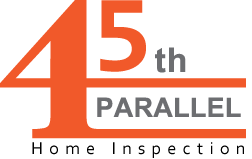Everyone has their own ideas when it comes to home inspection. So we like to take a moment to try and get everyone on the same page with what a home inspection consists of.
The main purpose of a home inspection is to perform a visual, non-invasive inspection of a property and identify material defects that are present at the time of the inspection. Material defects are the bigger defects in a home that can substantially affect the valuation of the property, or pose an unreasonable safety risk to the occupants. What does that mean? We are after the big fish, not the minnows. Things like roof end of life, unsafe or outdated decks, wood rot around the exterior, faulty or unsafe electrical panels, water in the crawlspace, and structural problems are a few examples of material defects. We have a very limited time in the home, usually 2-3 hours to try and identify any larger, relevant, decision making kind of defects. However, along the way, we try and give our customers as many smaller items as we can to assist in things that need repair to add to the repair / to-do list. We like to give folks as many smaller items as we can, time permitting. On a super tidy home that is in good condition, we have more time to add small items than on an older or fixer home that has a long list of defects.
Expect to find some things after moving in that either we chose not to comment on, did not notice, or was not present or has changed since the inspection. Having repairs and maintenance to perform is a normal part of home ownership and something that every home buyer should expect. What we don’t want is for you to move in and have an unpleasant surprise like a very large necessary repair that we didn’t notice or add to our report. An example of that would be a roof that needs replacement that is in obviously poor condition or a lot of standing water in the crawlspace that would have obviously been present during the inspection.
We follow all state prescribed standards of practice for inspections in Washington and Oregon. There are things we do not and are not required to inspect. A home inspection is not technically exhaustive, meaning we don’t look at every board and nail in a home given our very limited time.
Oregon state standards of practice: Oregon SOP
Washington state standards of practice: Washington SOP
The bottom line is that we give people 100% effort every inspection to identify material defects in a home that are present on the day of the inspection in the effort to prevent any major surprises right after purchasing the home.
